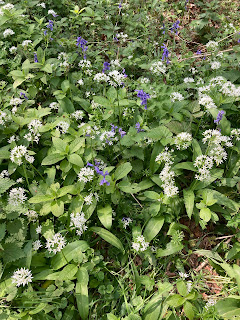Buff-Tailed Bumblebee
A queen Buff-Tailed bumblebee using her proboscis to feed from Ground Ivy flowers.
One of the first pollinators to emerge in the spring is the Buff-Tailed Bumblebee (Bombus terrestris). So named after the buff-coloured tail of the queen bumblebees which emerge first, though the workers have an almost white tail and can often be confused with the White-Tailed bumblebee.
Bumblebees nest in colonies underground, and bumblebees as big as the Buff-Tailed (~2 cm in length) frequently use old mammal nests (for example mice and voles). Buff-Tailed bumblebee colonies are large, and can reach 600 individuals!
Buff-Tailed bumblebees are parasitised by the cuckoo-bee Bombus vestalis, so called as it is a brood parasite, taking over the nests of its host, much like a cuckoo. It does this by killing the host queen and takes her place, so the host workers unknowingly raise the parasite's young.

A Buff-Tailed bumblebee feeding from Ground Ivy, although the flowers are not very 'open', they are small enough that she can reach the nectar.
Buff-Tailed bumblebees have relatively short proboscises so prefer more 'open' flowers so that they can better get to the nectar at the base of the petals. However, if they cannot reach the nectar source, they nibble a hole in the base of the flower to access it anyway, giving them the nickname "nectar robbers". These nibbled holes are then exploited by other insects who may have similar difficulty accessing nectar sources.
A queen Buff-Tailed bumblebee buzzing off to find her next meal.
Queen bumblebees create a colony by initially laying worker bees, which then help to grow the colony by collecting resources and tending to the larvae. When the colony is large enough, the queen can lay new queen bees which will go on to form other colonies. The new queens are the only members of the colony who will hibernate through the winter, emerging the following spring.
.jpg)




Comments
Post a Comment